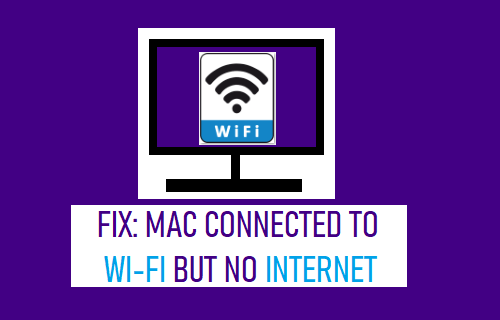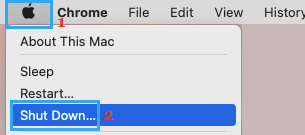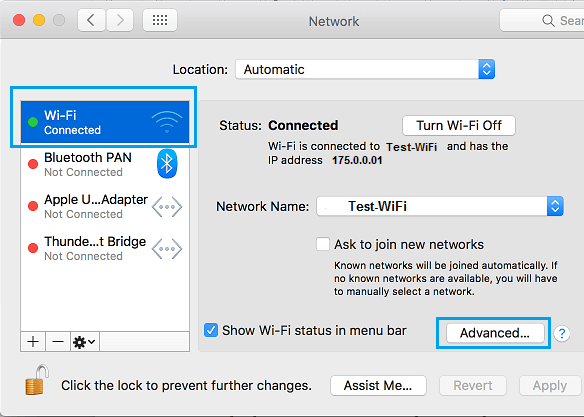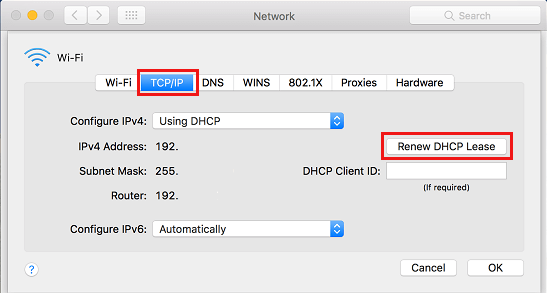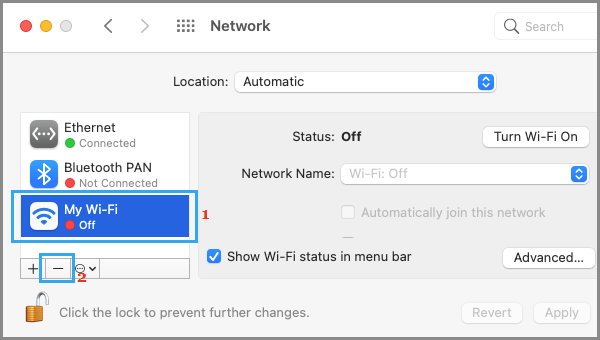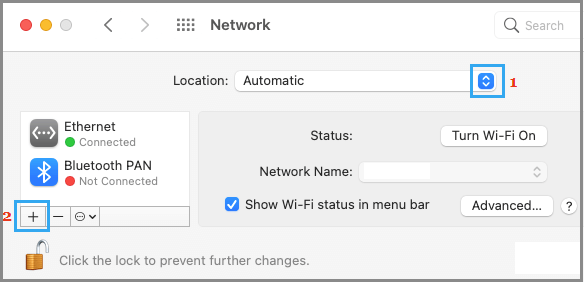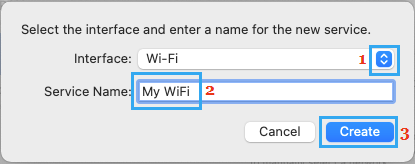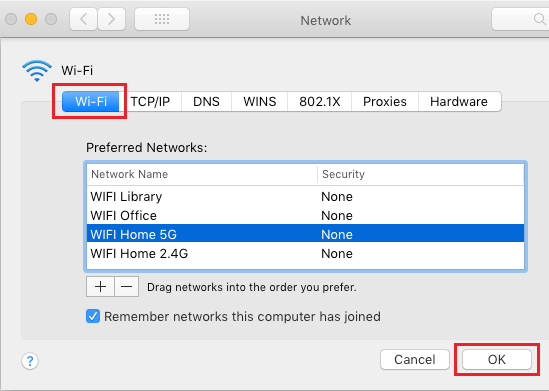Mac Connected to WiFi but Internet Not Working
In a typical case, MacBook appears to be clearly connected to WiFi Network, but there is no internet connectivity, as Mac fails to open the browser or connect to any website. There could be various reasons for this problem. ranging from minor software glitches, incorrect or corrupted network settings to other reasons.
1. Restart Mac
Click on Apple Icon in top-menu bar and select Shut Down option in the drop-down menu.
Wait for Mac to completely Shut down > Wait for 30 seconds > Restart the MacBook and see if Internet is now working on your MacBook.
2. Renew DHCP Lease
Click on Apple Logo > System Preferences > Network > select your WiFi Network in the left-pane. In the right-pane, scroll down and click on Advanced button.
On the next screen, switch to TCP/IP tab and click on Renew DHCP Lease button.
Click on OK to save the revised DHCP Settings on your computer and close the Network Settings screen.
3. Power Cycle Modem/Router
The problem could be due to a glitch in Modem/Router that is providing Network connectivity to your MacBook. This can be fixed by Restarting the Modem/Router. Disconnect Modem/Router from its Power Supply source > Wait for 60 seconds and connect the Modem/Router back to its power supply.
4. Create New WiFi Network
Note: Make sure that you note down your WiFi Network Password as you may be required to enter WiFi Password when you rejoin the WiFi Network. Click on WiFi Icon located in top-menu bar (top-right corner) and Switch OFF WiFi Network on your Mac.
Go to System Preferences > Network > select your WiFi Network in left-pane, click on the (-) Minus icon and click on Apply to remove the current WiFi Network from your Mac.
On the same screen, make sure Automatic Location is selected and click on the (+) Icon.
On the pop-up, select Wi-Fi as the Interface, type a Name for the WiFi Network (Optional) and click on Create.
Click on Apply to save the New WiFi Network on your Mac. Switch ON the WiFi Network on your Mac and see if you are able to connect to Internet.
5. Try Wireless Diagnostic Tool
If above methods did not help, you can try the built-in Wireless Diagnostics tool as available on your MacBook and see if it comes up with any suggestions. Open Spotlight Search (press Command + Space keys) > type Wireless Diagnostics in Spotlight search window and click on Wireless Diagnostics.App. On the next screen, click on the Continue button and allow Wireless Diagnostic Tool to find problems on your device. Note: The Wireless Diagnostics tool may temporarily change certain network settings on your computer.
6. Setup Network Priority
The problem could be due to your MacBook being connecting to a saved WiFi Network, which is currently not active. Go to System Preferences > Network > select your WiFi Netwok in the left-pane. In the right-pane, scroll down and click on the Advanced button.
On the next screen, drag your Preferred WiFi Network to the top in Preferred Networks window.
Click on OK to save your Preferred WiFi Network Settings. Note: You can remove unwanted WiFi Networks from your MacBook by selecting the Network and clicking on the (-) Minus Icon.
7. Change DNS Servers
If you are frequently experiencing WiFi connectivity problems on your Mac, the issue might be related to DNS server of your Internet Service Provider (ISP) being crowded.
How to Improve MacBook Battery Life How to Speed Up Slow Safari Browser on Mac
